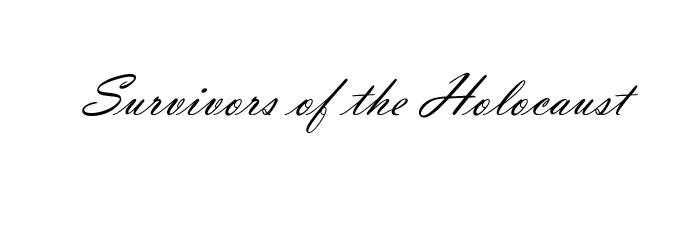
|
|
| It was difficult to be a Jew before and during the Holocaust. Joseph Sher was a Jewish child. "I would raise my hand all day during class and never get called on." Jews were beaten in the streets just because of who they were. Joseph remembers that his brother, father and other Jewish men from the ages of 15 to 80 were to go to the market. They were ordered to lay on the ground face down. If they raised their heads they were shot. Every tenth or twelfth man was shot to scare the other men. That day was called Bloody Monday because hundreds of Jewish men were shot. Jews had to work they shoveled snow, cleaned houses, shined boots and dug ditches. |
| Many Jews jumped off the death trains but not many survived. They were shot by the SS on the top of the train. Many Jews that jumped off the train and survived were caught. Out of 3,000 Jewish families in Eva Galler's whole city only 12 survived. A lot of Jews left the country illegally |
| Some Jewish prisoners had numbers tattooed on their arm so the Nazis knew who was prisoners. The Nazis also shaved the prisoners heads. The prisoners had to wear a yellow star on the sleeve of their shirt. Many Jews hid so they wouldn't be put in concentration camps. Many people were afraid of hiding Jews because they didn't want to be killed. Before the end of 1939 about 126,000 Jews escaped Austria. There were 12,000 Jews in Austria in 1970. On Kristallnacht 76 synagogues were destroyed. 36 Jews were killed. 815 shops and 171 homes were destroyed. The 150,000 remaining Jews who could not leave were doomed to death. |
| The pre-war population of Jews from Belgium was 90,000 but only 20,000 returned. 3 million Polish Jews were exterminated in Nazi death camps and concentration camps. 2,650,000 Jews from everywhere in Europe died on Polish soil. 41 Jews who returned to Kielce were murdered in the Jewish community center. 90,000 Jews from France died in the hands of the Nazis. The pre-war population of Jews from Hungary was750,000. 200,000 died or were murdered in prison camps. |
| The Jews faced rejection. Survivors faced Anti-Semitism. In the U.S. occupied part of Germany the visor on Jewish affairs wrote, "Only the presence of the American military safe guards the Jewish people." Many survivors had fatigue, starvation, disease and anger. Many made no movement towards freedom. Many survivors considered suicide. On July 4, 1946, 150 Jewish survivors returned home to find their families. They were met by a mob of angry Poles. 42 were killed and 50 were wounded. |
| Piri Davidowitz suffered from typhoid and malnutrition was treated in a hospital. Piri got sent to quarantine camps. By the third month she had recovered most of her strength and got to go to town. She went to island school and became a factory worker in the small village of Astorp. |
| Soloman Radasky was the only one out of 78 people in his family to survive. His mother and father were killed at Warsaw. His sister was also killed at Warsaw. His other two sisters and two brothers were killed at Treblinka. |
| Elie Wiesel was a survivor of Vision. Elie was 16 when he was set free from Buchenwald. His sister and parents were dead. Elie worked for 10 years as a journalist in France. Then he moved to Israel then to the U.S.A. where he was a professor at Boston University. He wrote more than 20 books that earned him the title "Bard of the Holocaust." |
| Leon Felhendler a survivor who ordered the revolt at the Sobibor death camps on October 14, 1943 was killed in an Anti-Semitism attack. Samuel Pisar a teenage boy who survived the last days of the war in a hay loft. Liberation was a very emotional day. Not all survivors were optimistic. They had to come to terms with the Holocaust. They had to realize deaths in the family. Survivors were different. Loss of family and friends was hardest of all. The Red Cross kept a list of known survivors. Keeping it accurate was nearly impossible because of survivors moving and dying. Sheerit Hapletah in Hebrew means "Surviving Remnant" European Jews who survived Hitler's final solution. In this group of people 300,000 were survivors of ghettos, concentration camps and death marches. |
| Heather Pickens
7th Holocaust Project Rossville Jr. High, April 2005 |